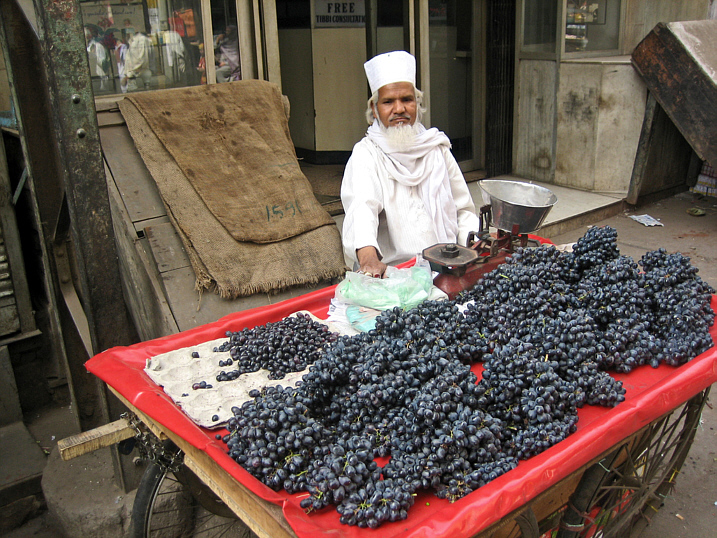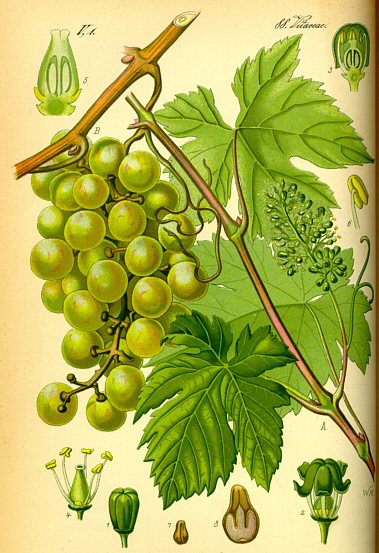

Zitierweise / cite as:
Carakasaṃhitā: Ausgewählte Texte aus der Carakasaṃhitā / übersetzt und erläutert von Alois Payer <1944 - >. -- Anhang A: Pflanzenbeschreibungen. -- Vitis vinifera L. -- Fassung vom 2007-07-08. -- URL: http://www.payer.de/ayurveda/pflanzen/vitis_vinifera.htm
Erstmals publiziert: 2007-07-08
Überarbeitungen:
Anlass: Lehrveranstaltung SS 2007
©opyright: Dieser Text steht der Allgemeinheit zur Verfügung. Eine Verwertung in Publikationen, die über übliche Zitate hinausgeht, bedarf der ausdrücklichen Genehmigung des Verfassers
Dieser Text ist Teil der Abteilung Sanskrit von Tüpfli's Global Village Library
WARNUNG: dies ist der Versuch einer
Übersetzung und Interpretation eines altindischen Textes. Es ist keine
medizinische Anleitung. Vor dem Gebrauch aller hier genannten Heilmittel wird
darum ausdrücklich gewarnt. Nur ein erfahrener, gut ausgebildeter ayurvedischer
Arzt kann Verschreibungen und Behandlungen machen!
Falls Sie die diakritischen Zeichen nicht dargestellt bekommen, installieren Sie eine Schrift mit Diakritika wie z.B. Tahoma.
Verwendete und zitierte Werke siehe: http://www.payer.de/ayurveda/caraka0001.htm

Abb.: Weintraubenverkäufer, Old Delhi
[Bildquelle:
A Culinary Photo Journal. --
http://www.flickr.com/photos/culinaryphotojournal/378004954/. -- Zugriff am
2007-07-08. --
![]()
![]()
![]() Creative
Commons Lizenz (Namensnennung, keine Kkommerzielle Nutzung, keine Bearbeitung)]
Creative
Commons Lizenz (Namensnennung, keine Kkommerzielle Nutzung, keine Bearbeitung)]

Abb.: Vitis vinifera L. - echte Weinrebe
[Bildquelle: Wikipedia]
Dutt:
"VITIS VINIFERA, Linn. Sans. Drakṣā, Mṛdvikā.
Vern. Āngurphal, Kismis, Manakkā, Beng. Hind.
Grapes have been known in India from a very remote period and are mentioned by Susruta and Charaka. The dried fruits called raisins, are used in medicine. They are described as demulcent, laxative, sweet, cooling, agreeable and useful in thirst, heat of body, cough, hoarseness and consumption.
Raisins enter into the composition of numerous demulcent and expectorant medicines. The following is an illustration. Take of raisins, emblic myrobalans, dates, long pepper and black pepper, equal parts, rub them together with honey and clarified butter and administer as a linctus.
Drakshā arishta. This is a medicinal wine prepared as follows. Take of raisins six seers and a quarter, water one hundred and twenty-eight seers, boil them together till reduced to one-fourth, and strain. To the strained decoction add twenty-five seers of treacle and eight tolās each of the following substances in fine powder, namely, cinnamon, cardamoms, tejpatra flowers of Mesua ferrea (nāgakesara), fruit of Aglaia Roxburghiana (priyangu), black pepper, long pepper and bāberang seeds, and set aside for fermentation. This liquor is considered invigorating and nourishing and is used in consumption, cough, difficult breathing and hoarseness."
[Quelle: Dutt, Uday Chand: The materia medica of the Hindus / Uday Chand Dutt. With a glossary of Indian plants by George King. -- 2. ed. with additions and alterations / by Binod Lall Sen & Ashutosh Sen. -- Calcutta, 1900. - XVIII, 356 S. -- S. 138f..]